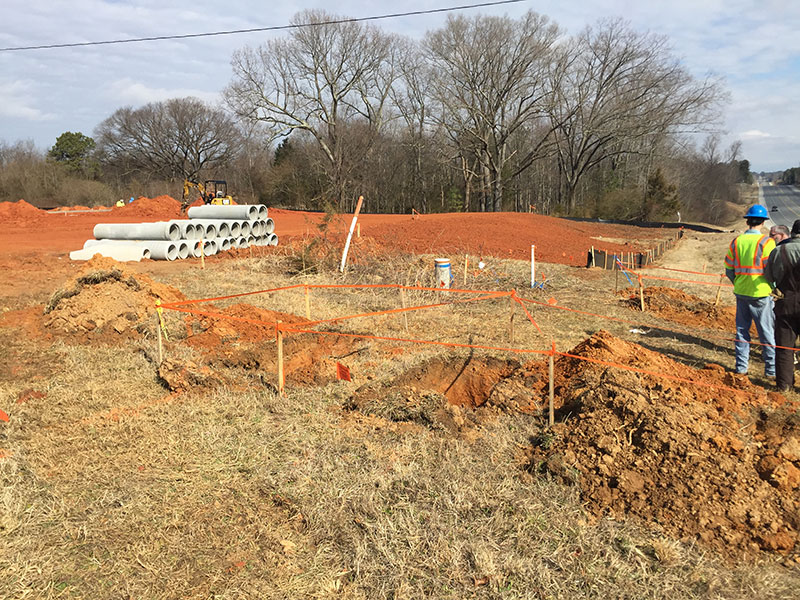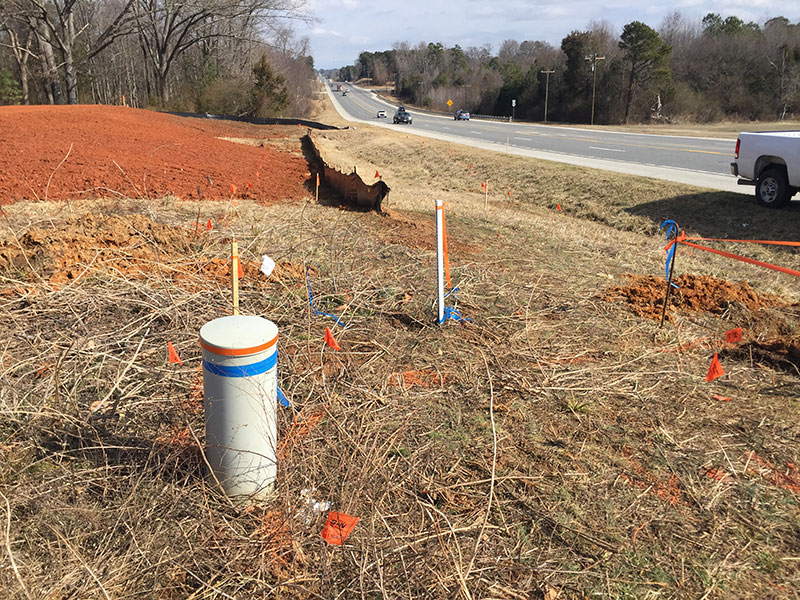
18 Jul 2018 The Importance of Subsurface Utility Engineering
Recently a contractor called us with an issue on a job that was already under construction. They had run into some underground utility issues on the site. There were multiple underground lines running across the front of the property, preventing the entrance and storm sewer system from being installed as designed. Unfortunately, the utilities were not discovered until the contractor was on-site and ready to start construction. This happened on two construction sites within a month for the same client. We had inherited both of the projects mid-way through the site plan process. The original engineer had shut down his company before getting the site plans approved. We would have highly recommended the services of a private Subsurface Utility Engineering (SUE) firm before beginning the site design process, had we been involved from the start of the project.
SUE firms specialize in locating underground utility lines in a designated area. Most private SUE firms perform services that comply with CI/ASCE 38-02, Standard Guidelines for the Collection and Depiction of Existing Subsurface Utility Data. There are four levels of service, Quality Level A through D. Level D is the least accurate and locates utility lines through existing records or by oral recollections. Level A is the most accurate – precise utility locations are obtained (both vertically and horizontally) from the actual exposure of the utilities. We find that most of our engineering projects are best served with the Quality Level B service. This uses surface geophysical methods (along with record drawings and visible above-ground utility features) to interpret ambient or applied energy fields that identify properties of, and structures within, the earth. In addition to marking the actual location of the utilities with paint and/or flags, most SUE firms will also create a sketch, or field sheets, as a deliverable product. If we find that there are underground utilities that need further exploration we have the Level A service performed.

Many engineers will use Virginia 811, commonly known as Miss Utility, to mark the utility lines. Virginia 811 is a non-profit organization created by Virginia’s utilities to protect their underground facilities. They offer free utility marking services for any contractor, homeowner, or designer. A call to Virginia 811 results in a notification sent to each member utility, or operator. They are responsible to mark their own lines with flags or paint. Contractors, or excavators, are required by law to notify Virginia 811 prior to any excavation on a job site; this initiates a “construction ticket”. When an engineer is designing plans and they choose to use Virginia 811 to locate utilities they will obtain a “design ticket”. Construction tickets are only issued when construction is anticipated to begin within 30 days. Construction tickets are more accurate and are quicker to obtain than design tickets. Design tickets allow 15 days for the operators to mark their lines and construction tickets only allow 3 days. There is more accountability with a construction ticket because liability falls on the operator for correctly marking utilities. If an individual operator either miss-identifies or fails to mark their lines on a construction ticket, then the operator is held responsible for any damage. If the excavator fails to properly notify Virginia 811 then the excavator becomes liable for damage. When a “design ticket” is called in, the law specifically states that any markings provided (or not provided) are simply for informational purposes only and the operators are not liable for incorrect information. In addition, Virginia 811 will not mark private utilities; they only mark public lines in the right-of-way or within easements.
Many of our past projects involved a design ticket that miss-identified or failed to mark some of the utility lines. The discrepancy is typically realized when more complete locating occurs with the “construction ticket”. At that point the design is already completed, the plans approved, and the contractor has already mobilized – as was the case with our inherited projects.

As more and more utility lines are installed below ground, we have discovered that spending the money to have a private SUE firm find and mark the locations is a worthwhile expenditure. We make sure to include a fee from a private SUE firm with almost every site design proposal we send out. Our client is free to turn that part of the scope down, but we explain that detailed and accurate utility location is an important benefit to a project. We try to avoid unforeseen delays especially due to missed utility lines as part of our commitment to offer quality services. Having a project potholed, surveyed, re-designed, and re-approved through the locality in the middle of the construction schedule not only delays a project, but adds unnecessary costs. An up-front fee from a private SUE firm is a minimal investment in a project if you consider the cost to fix a problem due to a missed utility line. KBJW believes having all utilities accounted for in the initial design of a project is integral in having a successful project. If you have any questions or would like more information on utility line location please contact Simon Mueller at 804 740-9200 or by email at smueller@kbjwgroup.com.

